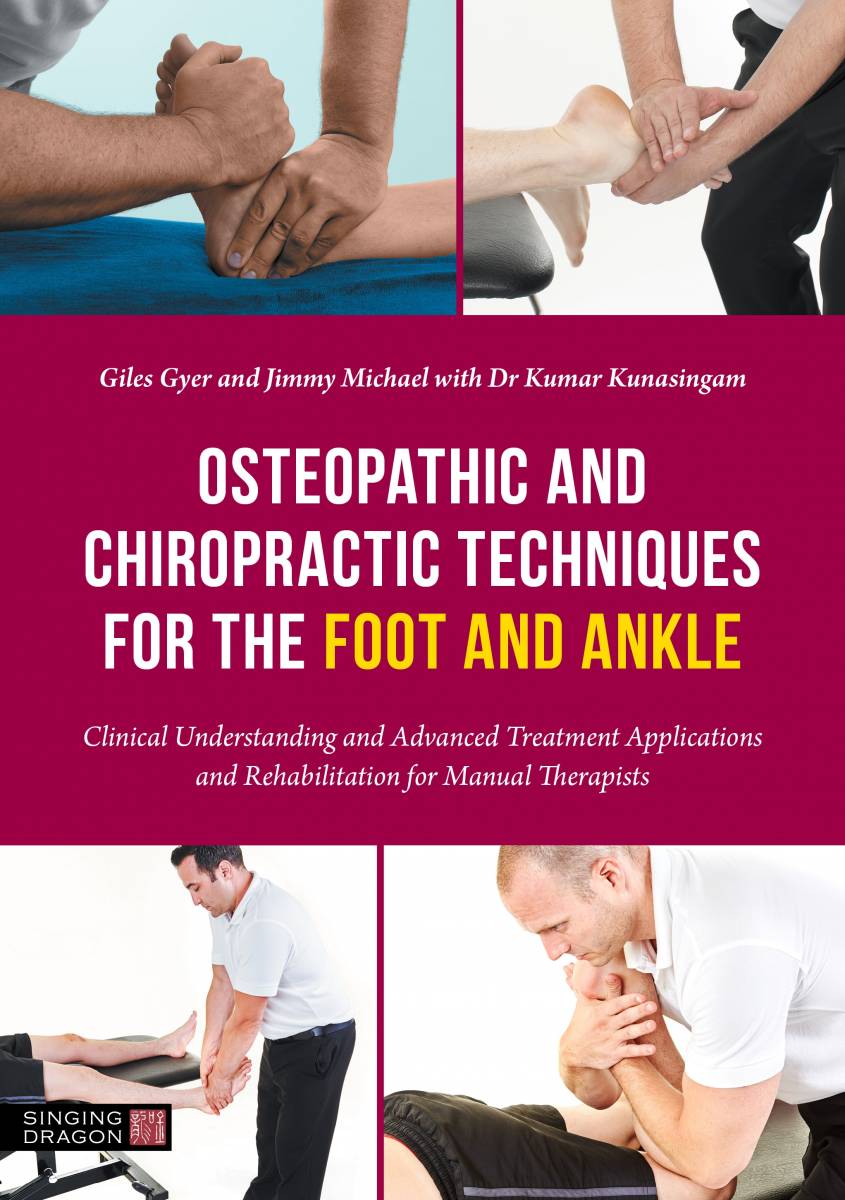Nick Worth describes a new book as a 'fantastic guide to managing common foot and ankle pathologies'
Osteopathic and Chiropractic Techniques for the Foot and Ankle: Clinical understanding and advanced treatment applications and rehabilitation for manual therapists
Authors: Giles Gyer and Jimmy Michael with Dr Kumar Kunasingham
Publisher: Singing Dragon
ISBN: 9781839972010
Price: £40
PhysioUpdate readers can obtain a 15% discount until 31 December 2023 when ordering a copy of this book by logging on to the publisher's website and entering the code PUFA15R at the checkout stage (the discount cannot be used in conjunction with any other offer).

This book gives an overview of foot and ankle management from the perspective of osteopathy and chiropractic techniques. The work of the two primary authors is complemented by contributions from other well-respected practitioners who write chapters focusing on a particular area of interest. It was refreshing to see this input from a range of musculoskeletal (MSK) practitioners – including physiotherapists – as this approach added to the overall feel and sense of completeness in the subject matter.
Foot and ankle anatomy as well as clinical examination is offered as a foundation to this book. This is described clearly using simple terms, which means the content is ideal for those learning the basics of clinical assessment. The accessible and colourful illustrations aid the reader’s understanding and support the text well. The book’s numerous tables help to clarify the clinical tests and findings offered throughout the book and summarise key aspects of the foot and ankle. Interestingly, there are several descriptions of knee examination that felt to me as though they might fit better in an alternative text dealing with the joint in more detail.
As a physiotherapist reviewing a book that is primarily aimed at osteopaths and chiropractors, there were many areas of new learning. For example, the handling skills differed at times from those used by physiotherapists while various guest authors covered topics such as bunion management and acute injury management. As you might expect, the techniques were largely familiar but were described using succinct teaching points that accompanied the colour photographs.
A chapter that was of particular interest covered dry needling. It was helpful to revisit methods that explain the mechanism of action and offer helpful trigger point sites using simple terminology.
Comprehensive coverage
This book aimed to cover everything: from leg length discrepancy to orthoses, muscle energy techniques and sports taping. The appendices also included some rehabilitation ideas. While the book generally flowed in a logical fashion, some chapters didn’t seem to ‘fit in’ quite so well – although the subject matter was important and well written.
For me, this textbook is a great handy guide to review foot and ankle anatomy and offered some different ways of mobilising the joints in this area of the body. It brought together a range of styles and techniques that were well referenced at all times. As a physiotherapist, there were some techniques that I felt I would not use but there were far more that I found were new to me and worthy of using in the future.
The vexed issue of 'manual therapy'
In the world of physiotherapy, there is a constant debate about the efficacy of manual therapy – but a text such as this clearly demonstrates that there is a wide range of options for therapists of all disciplines to use that can be supported by evidence. Admittedly, some evidence is not as robust as we might like but the principles contained in this book mean it’s a fantastic guide to managing common foot and ankle pathologies. This may be the type of book that you refer to when faced with an unfamiliar presentation and need some inspiration when considering treatment options.
The authors bring their obvious experience to bear in the pages of this book and you appreciate their efforts to make complex ideas understandable for practitioners at all levels. I am certain that this could become a well-used text for students learning MSK techniques and a reliable reference point for experienced practitioners looking to brush up on techniques that they may use less frequently.
As a physiotherapist who has worked with osteopaths and chiropractors throughout my career, there is always a wealth of shared learning that can be gained by all parties through collaboration – and this textbook is a great resource to support multi-professional MSK education.
Nick Worth is a physiotherapist who runs a private practice. He is the chair of the Society of Musculoskeletal Medicine (SOMM). For more information about SOMM, click
X (Twitter): @Nickworthphysio
To read Nick's review of Pain: The ultimate mentor, click
To read Nick's review of The Psychology of Perfectionism in Sport, Dance and Exercise, click
Author: Nick WorthShare it with














